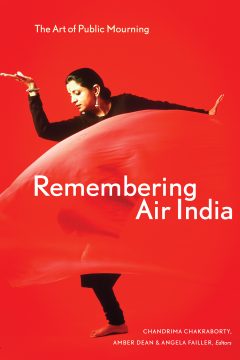When 167 members of the Canadian Staff Band of the Salvation Army perished at sea in the 1914 sinking of the Empress Of Ireland, mass public observances were held. A prominent memorial was built in Toronto. The Royal family donated $132,000 to a victims’ fund. Canadian newspapers for 40 years afterward marked the anniversary date with annual features.
When 329 people, mostly Canadians, perished at sea in the 1985 Air India bombing, there was no fund, no mass public mourning. The only memorial was in County Cork, Ireland, near the spot where Flight 182 took whole families to their death. Few Canadians recall the year this mass murder occurred.
The victims were modest people of ordinary means and little public profile. Would it have been different if 329 bankers died, or 329 tennis players? Of course. Would it have been different if 329 white Christians died? Remembering Air India answers this last, jarring question.
“State-sponsored efforts to memorialize the 1985 bombing of Air India Flight 182 within Canada are quite recent, only undertaken with any seriousness beginning in 2007,” editors write. “An annual memorial service has been held – conspicuously, not in Canada but in Ahakista, Ireland – since the first anniversary of the bombing.”
Remembering Air India is a poignant postmortem on memory and culture. The Empress Of Ireland is honoured with a Canada Post stamp and a commemorative Mint coin. In the Air India murders, no stamp, no coin; the Department of Foreign Affairs did not think to send a single consular officer to County Cork to assist families who’d rushed to Ireland to identify their dead. Prime Minister Stephen Harper 25 years later apologized for the “scant respect or consideration” paid victims’ families.
“Victims did not fit popular imaginings of who is a Canadian citizen,” writes contributor Maya Seshia of the University of Alberta. “The coming together of race and nation, the equation of whiteness to Canada and Canadians, continued to impact ideas about who was a Canadian and what events were considered nationally significant. Race overwhelmed victims’ Canadian citizenship.”
There are memorials now, a generation later, located in obscure parks in Toronto, Vancouver and Montréal. The memorial in Ottawa, erected in 2008, is not on any tourist map, and difficult to find. “There were no Canadian people to wipe my tears,” authors quote Donna Ramah Paul, who lost her brother, sister-in-law and two nieces – an entire young family – on Flight 182.
Remembering Air India acknowledges subsequent corrections to the record, including a Harper-ordered inquiry and 2005 declaration of June 23 as a National Day of Remembrance for Victims of Terrorism. But this took a generation. Winnipeg poet Uma Parameswaran writes:
- “June 23, 1985, dark day of ignominy
- when Mulroney sent condolences to Raviv Gandhi
- for ‘your great loss’
- after Flight 182 hurtled through the sky
- into the Irish sea
- stopping three hundred Canadian hearts
- and breaking three thousand more.”
By Holly Doan
Remembering Air India: The Art of Public Mourning, edited by Chandrima Chakraborty, Amber Dean & Angela Failler; University of Alberta Press; 360 pages; ISBN 9781-7721-22596; $29.95








